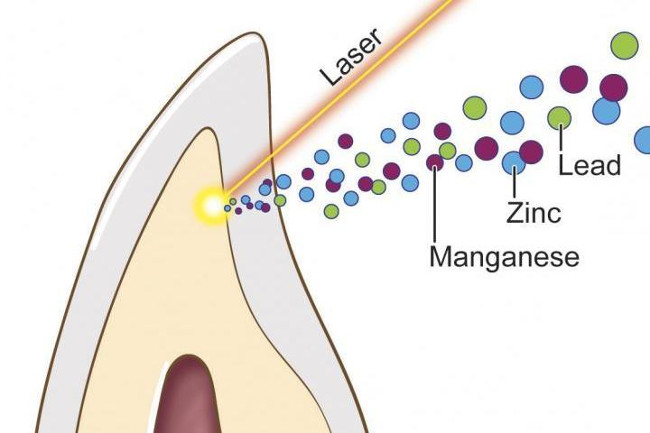The link between autism and toxic lead levels found in young teeth
Research by the National Institute of Environmental Health Sciences, or NIEHS, said they found a link between lead levels in young teeth and autism.
The study by NIEHS, a division of the National Institutes of Health, found that children with autism had high levels of toxic lead, less essential nutrients, such as zinc and manganese, compared with children without autism. century.
"We think that autism has started very early, probably from the womb, and research shows that our environment as well as maternal health can increase risk. a child with autism, but when a child is diagnosed at age 3 or 4, it is difficult to quickly and effectively treat it quickly - Cindy Lawler, head of the Department of Health, Environment and Health of NIEHS said in a press release. "With children, we can really understand that risk."
 The link between autism and toxic lead levels found in young teeth Picture 1
The link between autism and toxic lead levels found in young teeth Picture 1
To this conclusion, the researchers compared the metal uptake in children's teeth from 32 twins and 12 twins, detecting small differences in the metal absorption model when both Two twins have autism and the difference in metal absorption is greater when only one twin has autism. They use lasers to extract the layers of teeth correctly including hard substances under the enamel, to analyze the existing metal.
The difference in metal absorption in young teeth and whether or not the condition with autism has been found in the months before and after birth, with high levels of lead in autistic children throughout development but The biggest difference is easy to identify right after birth.
The researchers found that there was a certain lack of manganese in children with autism before and after birth. Not only that, autistic children have lower levels of zinc than before birth, however, this level increases after birth.
Confirmation results from previous studies suggest that exposure to toxic metals such as lead and lack of essential nutrients such as manganese can harm the development of the young brain from the womb of the mother or in the childhood of the child after being born.
Exposure to both toxic lead and high manganese content in teeth is closely related to the symptoms of autism.
Lawler said: "Many studies have compared the level of lead in the diagnosed infant body. It is possible to measure something when children are exposed to or contain this substance in the body, this is a characteristic advantage for studying childhood diseases'.
This research has just been published in Nature Communications.
You should read it
- Smoking, drinking alcohol can cause complete fillings
- Check out 10 types of special foods that are harmful to teeth
- The dentist instructs how to brush teeth properly
- 8 common mistakes in dental care
- Terrible types of lead poisoning in history
- Beautiful white teeth without using chemicals
- How to use nylon bags to not be poisoned
- 10 mistakes are often made when taking care of your teeth
- 4 habits unknowingly make teeth more and more badly damaged
- New dental materials help prevent plaque, kill bacteria
- 8 types of foods that have a very good toxic effect, should be used this summer
- The world's first dental fillings are found in Italy
May be interested

Why are there three plugs and three legs in the power plug?

Science uses dogs to directly study breast cancer

Air cushion increases the risk of death in newborns

Underground water dominates the migration of human ancestors in East Africa

DNA vaccine with immunotherapy can treat HPV

In the future, Wood is the only material to build skyscrapers, not concrete or steel






 Science has identified the target protein for autism treatment
Science has identified the target protein for autism treatment Are metals in tampons dangerous?
Are metals in tampons dangerous? The researchers identified two proteins that could help diagnose autism spectrum disorders
The researchers identified two proteins that could help diagnose autism spectrum disorders Vitamin D deficiency in newborns is at risk of autism
Vitamin D deficiency in newborns is at risk of autism Beautiful white teeth without using chemicals
Beautiful white teeth without using chemicals Boys are at higher risk of autism than girls
Boys are at higher risk of autism than girls